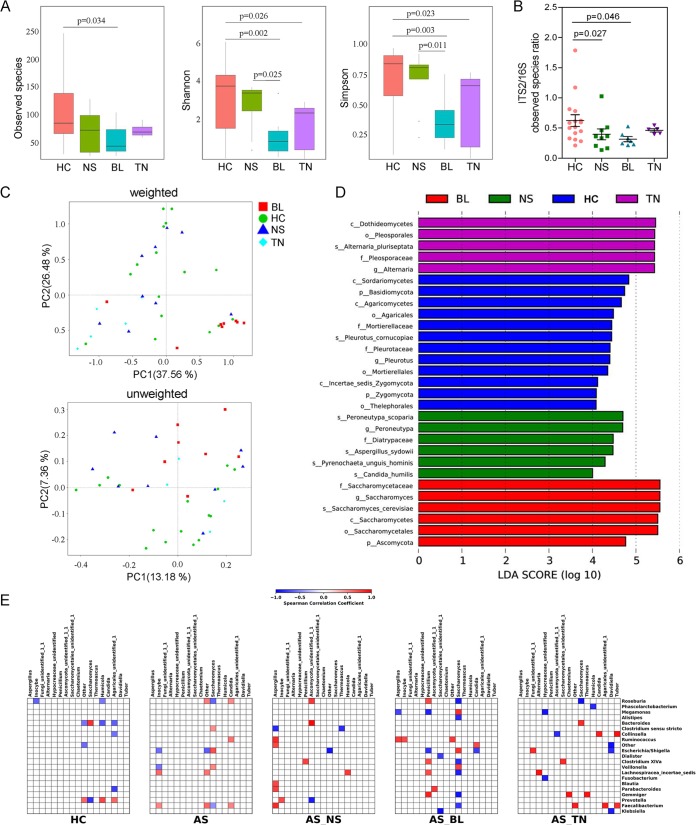FIG 4.
Altered mycobiota and bacterial-fungal correlation in AS patients receiving different therapeutic regimens. (A) Observed species, Shannon index, and Simpson index describing the alpha diversity of the fungal microbiota in four groups studied. (B) ITS2/16S observed species ratio. (C) Beta diversity. PCoA of Bray-Curtis distance with each sample colored according to the treatment group (four groups). PC1 and PC2 represent the top two principal coordinates that captured most of the diversity. The fraction of diversity captured by the coordinate is given as a percentage. Groups were compared by a Permanova method. (D) Main composition of fungal microbiota in four groups studied. (E) Specific bacterial-fungal correlation pattern in AS. Distance correlation plots of the relative abundance of fungal and bacterial genera. Statistical significance was determined for all pairwise comparisons; only significant correlations (P value of <0.05 after false discovery rate correction) are displayed. Positive values (blue squares) indicate positive correlations, and negative values (red squares) indicate inverse correlations. The shading of the square indicates the magnitude of the association; darker shades are more strongly associated than lighter shades. The sign (positive or negative) of the correlation was determined using Spearman’s method.

